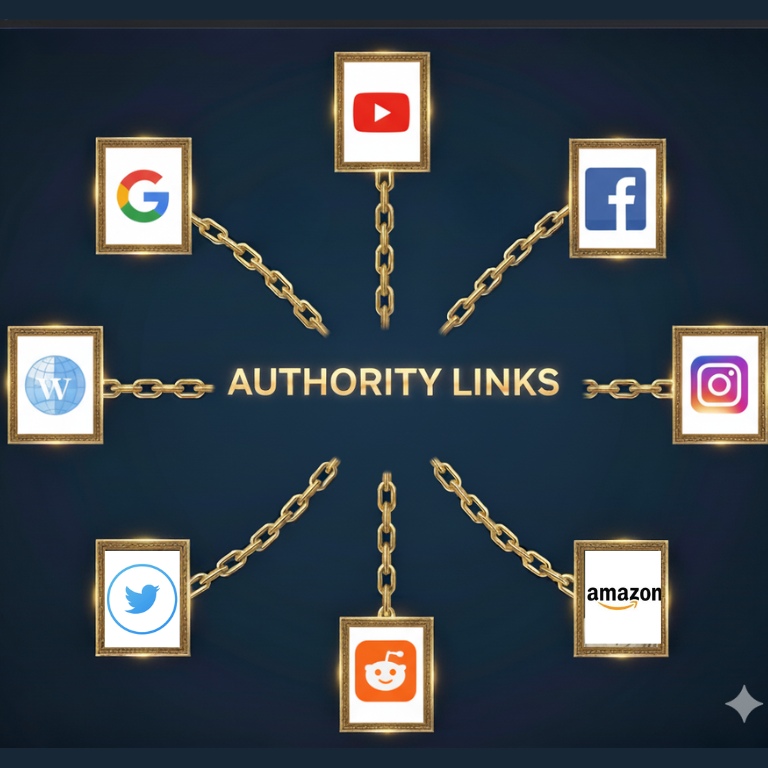Ever feel like you’re shouting into an empty room when you publish a new article? You spent hours researching, writing, and polishing, only to see it disappear into the endless sea of content. The truth is, most articles get lost because they’re not built to stand out. They follow the same old "how-to" formula that Google's algorithm has seen a thousand times. But what if there was a way to write content that not only answers questions but inspires action? What if you could create a type of article so powerful it gets shared, cited, and loved by both humans and search engines? You're about to discover the secret to writing a simple, powerful article format that does all that and more.

Key Takeaways
Traffic: To rank high on Google, your article must directly answer a user's question, also known as their search intent. Google's AI loves content that provides fast, clear answers. By using a list format, your article can often outperform a long, drawn-out guide.
Links: People share and link to articles that are easy to cite. Make your content a go-to source by including stats, visuals, quotes, and solid sources. Your goal is to make it easier for others to link to your work than to write their own.
Shares: Generic advice doesn't get shared. Focus on surprising, helpful, or inspiring takeaways. By organizing your list for quick scanning and leading with unexpected information, you'll increase the chances of your article being shared on social media and beyond.
Quick Rule: Every item on your list should offer standalone value. A reader should be able to screenshot a single point and still get a useful tip or idea without needing to read the entire article.

What Is a "Listicle"? (And Why Should You Care?)
A "listicle" is just a fancy word for a blog post or article that's organized as a list. Think of articles with titles like "7 Ways to Save Money" or "Top 10 Best Tools for Social Media." You've seen them everywhere!
Instead of a long, boring article with endless paragraphs, a listicle breaks down a topic into clear, numbered points. This is important because most people don’t have time to read a 5,000-word essay. They want quick answers they can scan.
Imagine you're trying to figure out how to unclog a sink. Would you rather read a long, detailed story about a plumber's day or a simple list that says:
Use a plunger.
Pour baking soda and vinegar down the drain.
Try a drain snake.
You’d choose the list every time, right? That’s because the list is faster and more helpful. It gets straight to the point and gives you steps you can follow.
The best listicles do three things really well:
They Answer a Specific Question: For example, instead of writing a general article about coffee, a listicle might answer, “What are the 7 best coffee brewing tools for beginners?” This gives the reader a clear goal.
They Help Readers Make a Decision: By presenting a list of options with pros and cons, you help someone choose the right product, service, or strategy. For example, a car dealership might write, "5 Best SUVs for Families," helping parents make a buying decision.
They Make Every Item Useful on Its Own: A great listicle is like a set of building blocks. Each block (list item) is valuable on its own, but together, they create a complete picture. For instance, a list of “10 Healthy Lunch Ideas” would have each idea stand on its own, so you could screenshot one and have a full recipe.
A listicle is easy to scan, easy to share, and easy to cite. When every piece of the puzzle earns its spot, you get a powerful, action-driving piece of content.
7 Steps to Writing an Article That Actually Works
There's no magic formula, but there is a clear process to create an article that drives traffic, earns backlinks, and gets shared.
Step 1: Choose the Right Topic and Format
Not every topic should be a list. The list format works best when people are comparing options or looking for quick takeaways. If a person is typing a question into Google like “what’s the best,” “how to fix,” or “top tools,” that's your green light.
For example, a marketing agency might write, "10 Social Media Management Tools That Will Save You 10 Hours a Week." This directly answers a user's desire to save time and gives them options to compare.
Look for Cues: Check Google’s search results. If the top-ranking articles for your keyword are all lists, then a list format is likely the best way to compete and win.
Convert Your Headline: Studies show that adding a number to a headline can boost clicks. A headline like "3 Ways to Improve Your Writing" often performs better than a headline like "Improve Your Writing."
Step 2: Pick the Right Number and Structure
You don’t have to stick to even numbers like 5 or 10. Odd numbers, such as 7 or 11, can often grab more attention. The most important thing is the depth and structure of your list.
Instead of writing a long list with 25 weak points, focus on a shorter list with fully explained tactics. A 1,500-word article with just 5 well-developed items can be much more effective than a bloated 3,000-word post.
Example: A fitness coach could write an article titled, "5 At-Home Workouts That Will Transform Your Body in 30 Days." Each of the five points would contain a full workout routine with detailed instructions. This gives the reader real value they can use immediately.
The Stand-Alone Test: Ask yourself, "Could someone screenshot this section and get value without reading anything else?" If the answer is yes, you're on the right track.
Step 3: Front-load the Value
Most readers won’t get to the end of your article. The first three or four items on your list carry the most weight for clicks, shares, and rankings. So, put your most powerful and unexpected points at the very beginning.
Don’t save the best for last. This is about grabbing your reader’s attention immediately and earning their trust with every new point.
Example: If you're writing a list of content creation tips, you might start with a point most people overlook, like, "The #1 Thing You're Missing: Your Author Bio." This is an unexpected hook that makes people want to keep reading.
Step 4: Make It Link-Worthy
The easiest way to get backlinks (links from other websites to yours) is to create something so valuable that people want to cite it. Backlinks tell Google that your content is trustworthy and important, which helps you rank higher.
Add Real Substance: Include things people don’t want to rebuild from scratch. Think original charts, unique frameworks, or stats with source links.
Cite Real Data: Citing sources not only makes your content more trustworthy but also makes it easier for others to use your information in their own content.
Expert Quotes: Reach out to credible voices in your industry for a quick quote. It adds authority and makes your content stand out.
"A great listicle is not a shortcut; it's a vehicle for delivering value with speed and precision."
– Seth Godin, Marketing Expert
See How Digital Marketing All Can Drive More Traffic to Your Website
Brand Voice Strategy: Let our team help you create your brand voice to attract your ideal customer.
Market Growth Opp Research: Let our team show you where you can gain additional traffic that you are missing.
Local SEO: Unlock more SEO traffic. See real results. Dominate your local market.
Dominate Google: Let us get your company to the top of Google.
Competitive Link Analysis: Know what your competitors are doing.
Geo-Targeting: Let us find your customers in your desired location.
Content Marketing: Our team creates epic content to be shared, generate links, and attract traffic. We know the secret recipe for success.
Paid Media Advertising: Effective paid strategies with clear ROI. You pay per result with us.
Blogging Services: Let us create a blog that will help you rank.
Search Box Optimization: Owning a keyword in your local area is the best way to dominate your local market.
Search Price Optimization: Not only can you own the keyword in your local area and nationally, but you can control your advertising cost by getting out of the price war that exists in pay-per-click advertising and achieve a higher ROI.
Marketing Consulting: Develop tailored strategies to grow your brand and maximize impact.
Step 5: Format for Readability and Shares
Listicles are meant to be scanned quickly, so how you format them is crucial. This helps both people and Google’s AI understand your content better.
Use Headings for Every Item: This helps readers navigate your post and helps Google understand the structure of your content.
Bold the Main Point: Use bold text to highlight the key takeaway in each item, making it easy for a reader to get the main idea with a quick glance.
Stick to a Consistent Structure: You might follow a pattern like: Problem → Fix → Example. This makes your list predictable and easy to follow.
Add Visuals: Break up text with relevant images, infographics, or short videos. This makes your content more engaging and keeps people on the page longer.
Step 6: Optimize for SEO (and AI Summaries)
Listicles are perfect for winning a Featured Snippet or appearing in Google’s new AI-generated summaries. These are the special boxes that appear at the top of Google’s search results, giving you a huge visibility boost.
Start with a Lead-in Line: Begin your list with a sentence like, "Here are 7 marketing tactics that will help you grow your business." This signals to Google's AI exactly what your content is about.
Use Schema Markup: This is a simple piece of code you can add to your website that tells Google your content answers specific questions, which can help your article appear in the "People Also Ask" section.
Write for AI: Google’s AI loves clean, cited, and factual information. By writing your listicle with a clear structure, you make it easy for AI to understand and summarize your content. A study found that blog posts are the most frequently surfaced content type in Google's AI Mode, so this is a huge opportunity!
Step 7: Write a Call to Action That Drives Action
A great article shouldn't just end. The conclusion should be a launchpad that propels your reader into action. Don’t just ask for a comment.
Offer a Bonus: Give the reader something extra, like a free checklist or a simple template. This feels like a bonus, not a sales pitch.
Ask a Powerful Question: End with a question that makes them think about their own next steps. Something like, "Which of these 7 tips are you going to implement first?"
Encourage Sharing: Suggest they share the list with their team or a friend who would find it useful. This keeps the momentum going and helps your article reach more people.
FAQs
Q. What is a listicle?
A. A listicle is a type of article or blog post that is structured as a list. It's a quick, easy-to-read format that breaks down complex topics into bite-sized, numbered points. This makes the information easy to understand and digest for the reader.
Q. Why are listicles so popular?
A. Listicles are popular because they are designed for the way people read online—which is quickly, by scanning. They are also easy to share on social media, and they work well for mobile devices. This makes them a great way to deliver a lot of value in a short amount of time.
Q. How do listicles help with SEO?
A. Listicles can be a powerful tool for search engine optimization because they are often a perfect match for what people search for on Google. When someone types in "best books for marketers" or "7 ways to improve your website," a listicle is the ideal format to answer that question, which can help it rank high in search results.
Most people write listicles as a shortcut. But you're going to use this approach to get real results. You're going to create content that’s so well-structured, so clear, and so valuable that it won’t just rank. It will drive traffic, earn backlinks, and keep getting shared. Your next post won't just be an article; it'll be a magnet for new business.
Want to see this strategy work for you without doing all the heavy lifting? We are experts at writing blogs and articles that grab attention and drive traffic. For a limited time, we have a special offer just for you: get one free blog post or article when you sign up for our 6-month content subscription.
Ready to make your content a magnet for new business? Contact us to claim this offer and start seeing the results for yourself.
 Add Row
Add Row  Add
Add 








Write A Comment